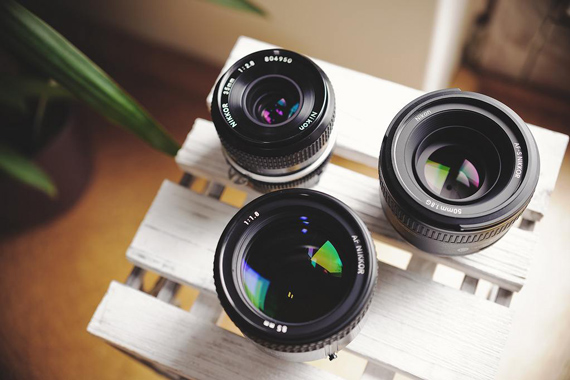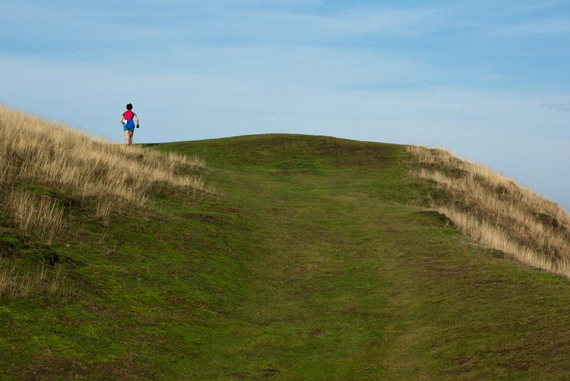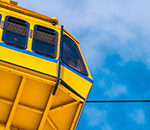Do you own a prime lens? Every DSLR owner should have at least one fast, fixed focal length lens in their camera bag. Zoom lenses are great; they can reduce weight and expense. When the situation calls for it, however, a good prime lens can be a photographer’s best friend. In the following article, you will learn what a prime lens is and the many ways a fixed focal length lens can improve your photography.
Not so long ago, the average photographer avoided zoom lenses. Single focal length lenses, known as prime lenses, were faster, lighter, and less expensive. More importantly, prime lenses offered superior sharpness and image quality.
Fortunately, lens makers have been able to dramatically improve zoom lenses so their image quality is nearly on par with prime lenses, This has been a tremendous boon to photographers, who can replace an entire bag full of lenses with one or two zooms. If image quality was the only criteria, most photographers could easily get by with a couple of nice zooms. Of course, there is more to lens selection than image quality, and there are many situations where a prime lens is still a superior option.
Speed
It is generally easier and less expensive to build a fast single-focal length lens, and few zooms can match the low-light qualities of a prime lens. Prime lenses with maximum apertures of f/1.8 or greater are commonplace. In contrast, most zoom lenses top out an aperture of f/4 or so. Even the very best, most expensive zooms seldom exceed a maximum aperture greater than f/2.8. The superior light-gathering properties of a good prime can make a huge difference if you are shooting available light indoors or after dark. True, you can ramp up the ISO to improve the zoom’s ability to shoot in dim light. But high ISO can create quality problems. When the existing light is feeble and you do not want to break out a flash unit, your prime lens can save the day.
Image Quality
I already said that zooms have reached parity with prime lenses. In general, the optical requirements to create a great prime lens are well understood, while zoom lenses demand extensive engineering to produce excellent results across the entire focal length range. While there are some truly excellent zooms on the market, many zooms are better at certain focal lengths than others. Photographers talk of the sweet-spot, that is, the focal range where a particular zoom offers the best performance. At other focal lengths, sharpness and contrast may suffer. Again, this is not true of all zoom lenses, but as a general rule, it is much simpler to design an excellent prime lens than it is to design a truly superb zoom lens. So great prime lenses are plentiful, while outstanding zooms are rare (and expensive!).

Photo by Nicolas Winspeare; ISO 200, f/1.0, 1/250-second exposure.
Size and Weight
Typically, a prime lens is much smaller and lighter than a zoom lens. The zoom lens requires more internal elements and there must be a mechanism to move those elements nearer or farther to each another. In addition, fast zoom designs usually incorporate very large components in order to collect more light. As a result, a fast zoom is usually much larger and heavier than a prime lens. This is important when you want to use your DSLR as a light-weight walking-around camera. The unobtrusive prime lens also makes it easier to capture candids, as the lens is far less noticeable than a large zoom.

Photo by Björn Bechstein; ISO 100, f/2.0, 1/60-second exposure.
Cost
A quality zoom lens will be more expensive than a a prime lens, although the additional cost is somewhat nullified by the fact that a single zoom can take the place of several fixed focal length lenses. Still, price can be an important consideration, especially if you are looking at a very wide or very long lens. For example, a 300mm prime lens will usually be far cheaper than a good zoom that includes a 300mm focal length.
Speedier Auto-Focus
There are so many lenses on the market that it is difficult to make a blanket statement regarding the auto-focus speed of prime lenses relative to zooms. Still, prime lenses seem to snap into focus more quickly then their adjustable focal-length cousins. Part of that may be the speed aspect again, as extra light allows fast lenses to focus more quickly. The additional elements in a zoom lens can slow focus speed as well. When the situation calls for rapid auto-focusing, you may find a prime lens is a better choice.
There is always room for a small prime lens. When packing for a photo assignment, I usually cull my lenses to save weight and fit everything in my smallest bag. The big zooms are usually the first to be cut, unless I know I will need them for the shoot. In contrast, my short prime lenses take up so little room that I usually slip one or two into the camera bag just in case. If I need the lens I am grateful that I brought it, but if I do not use it I don’t feel that it was a burden to have it along.
You may not use your prime optics every time you shoot, but you will find that prime lenses offer so many advantages that you will want to have one or two different primes with you whenever you venture out with your camera.
About the Authors:
Alphatracks is a site about Photography Basics. Tom Bonner is the author of the Sony Alpha DSLR – A300/A350 Digital Field Guide, published by Wiley Publishing. A photographer for more than three decades, he offers photography and web design services to clients in the Charlotte, NC area.
Like This Article?
Don't Miss The Next One!
Join over 100,000 photographers of all experience levels who receive our free photography tips and articles to stay current:







Mr. Blaise. Thank you for clarifying the definition of Prime and Primary lens. I’ve been made to believe that Prime Lenses are Single Focal Lenses and Zoom Lenses are Multi focal lenses that you can “zoom”, say 24 to 240 mm depending how you want the subject appears on your view. Every time I listen to professional photographers’ lectures ( and I attended a lot in my few years of getting hooked on photography), this is how they define the 2 types of lenses, Prime or Zoom. Hunt’s Photo and B&H where I buy my lenses also categorize these differences.
I do agree with you that your choice of lens you attach to your camera is your “primary” or favorite lens.
I wish folks would vie for accuracy.
Those are single-focal-length lenses.
When attached to a camera as the primary image-forming lens, they are “prime” or “primary” lenses by function.
When attached to a camera system as a secondary lens, they are “secondary” lenses by function.
“Prime” does not mean “single-focal-length”.
“Prime” means “primary”.
When attaching a multi-focal-length lens, a vari-focal-length lens, a “zoom” lens, to a camera as the primary image-forming lens, it, too, is a “prime” lens by function.
A diopter, or telephoto adapter, or one of these lenses reversed and put in the front of a “primary” or “prime” lens, would be “secondary” lenses by function.
So these lenses could be primary or secondary lenses, depending on their participation in the image-forming path.
Zeiss and others until recently tried to acknowledge this by selling both single-focal-length lenses and multi-focal-length zoom lenses as “prime” lenses.
It would really help newbies — and oldies alike — to learn if they understood the function of their gear and did not have to deal with arbitrary inaccurate misnomenclature.
I always carry at least one prime lens in my camera bag. Usually my Pentax FA50mm f/1.4. It’s small, light, fast and creates excellent bokeh. My Pentax K-5II is great in high ISO situations so I almost never need a flash with that lens. Another prime I often use is my Tamron 90mm f/2.8 Macro. Another fast prime, great for portraits and of course, close ups.
I’ve been using prime lenses for nearly the past 3 years, almost exclusively.. I carry a Canon 5DM3+85mmf1.2LII, and a Fuji x100 (35mmf2), and I get to frame the photo in my head before pulling out the camera.
I understand it’s a hassle to carry two bodies, but I find it easier than swapping lenses.